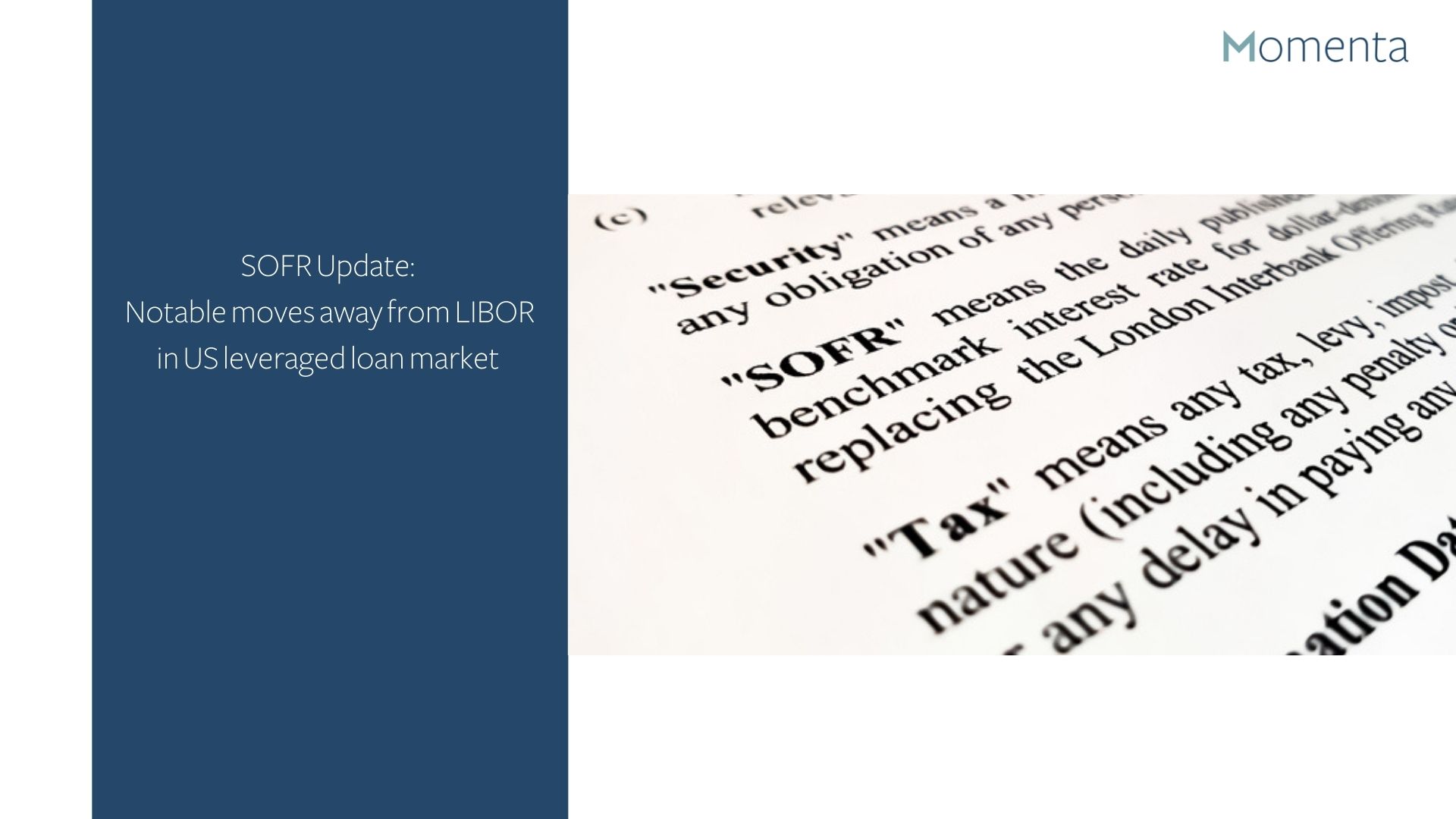SOFR Update: Notable moves away from LIBOR in US leveraged loan market
The last month has seen some significant movement in US markets as momentum builds towards LIBOR’s impending demise.
So far, two leveraged loans have been issued using SOFR – the ARR, advocated and preferred by the regulators, and ARRC. Real estate lender Walker & Dunlop Inc. was the first company to announce a U.S. leveraged loan sale using SOFR – which represents a significant step towards the post LIBOR world in the US.
The start of 2022 will see a much wider expansion in the scope for financial products that will not reference LIBOR, which is one of the biggest challenges that the financial services market in the US has faced in many years.
According to a recent report from Bloomberg, all loans issued before January 1st, 2022, can still use Libor through to the middle of 2023.
Why do these developments have such significance?
Any new loan offered which is tied to SOFR carries a notable indication that the wider market is finally ready to leave LIBOR behind and embrace the future lending landscape.
Hedge funds have thus far broadly embraced alternative reference rates, but many other market participants have been more hesitant to choose which of the alternative reference rates (ARR) will work best for them.
Following suit from financial products such as derivatives, who have made significant progress in the last few months, the leveraged loan market now appears to see a future in the post-LIBOR world.
Prior to these recent developments, the leveraged loan market had been slow to adopt SOFR for a variety of reasons.
Initially, SOFR could only be calculated as a daily rate, in contrast to LIBOR, which had a wide range of tenors including one, three, and six months.
One of the main causes of this delayed adoption was due to the market awaiting the Federal Reserve-backed Alternative Reference Rates Committee to ratify one-, three- and six-month versions of SOFR (which occurred on July 29, 2021).
However, even following this, there still wasn’t an immediate shift to issuing new loans in SOFR.
There were also alternatives to SOFR created, such as the Bloomberg Short Term Bank Yield Index and Ameribor, and many felt this led to further market confusion.
This confusion was exacerbated due to these, and other alternatives, offering a similar structure to LIBOR, suggesting to some in the market that an easier transition than via SOFR was possible, while others actually thought them to be unnecessarily similar to LIBOR.
JP Morgan Chase and co. is a true example of a member of the industry embracing LIBOR’s demise.
This in turn is likely to create a domino effect for those market participants who are yet to make a move to adopt alternative reference rates.
It will also allow others to ease into using SOFR backed loans, which many are still yet to embrace in the wider market.
So far, many market participants have waited for the larger industry players to make the first move in terms of SOFR adoption before they finalise their transitional plans.
As that wider market adoption begins to take place, it will mark a significant step in achieving new regulatory implementation before some key upcoming deadlines.
SOFR adoption has been embraced more widely recently due to the endorsement of the CME Term SOFR by the ARRC, however it’s real-life transactions and deals that will ultimately give others the confidence that they need, and this alone may be the single largest contributor recently towards moving the agenda along.
Next steps for the market
This leaves the market, especially the leveraged loan market in the US, still very much in the early stages of overall transition.
For market participants still nervous to transition using SOFR, the market has now offered more reassurance and reliance that the rate will be widely adopted.
How can we help your business manage the transition process?
Momenta are a global contingent resource solutions firm, and for over 30 years we have been partnering with companies in the financial services, legal, technology, and training and development sectors to cost effectively provide the right people, with the right skills, at exactly the right time.
Momenta will provide you with additional resource for the relevant key areas of the LIBOR transition process, allowing you to focus on the strategic oversight of the project while we help to implement your vision.
This flexibility allows you to ensure that there is always the right balance to your team, delivering a far more effective solution that will benefit the results delivered to your client
Momenta also specialises in scaling resource requirements up and down during the lifetime of a project to meet all key requirements, whilst helping to maintain cost control in resource delivery capacity and capability.
Given the mammoth task ahead for U.S businesses in the LIBOR transition process, Momenta can provide fully built teams to support in all key disciplines, including:
- Identifying the contracts that need to be swapped
- Re-papering according to an appropriate index rate
- Reviewing fallback language
- Calculating the fluctuated pricing with each contract due to the new IBOR attached to any calculation or swap
- Contract negotiation and review
- Communications to the end customer regarding their new rates
- Additional skilled and experienced resource will help you to avoid wasted time and help your clients transition their contracts to a new index on-time, efficiently, and effectively.
[/fusion_text][/fusion_builder_column][/fusion_builder_row][/fusion_builder_container]

